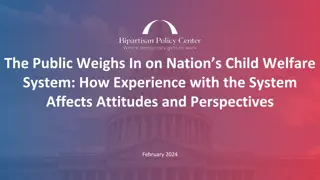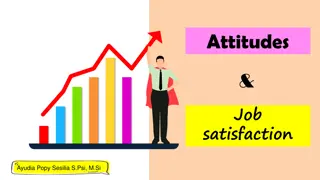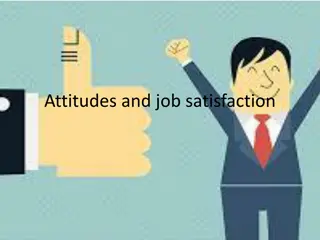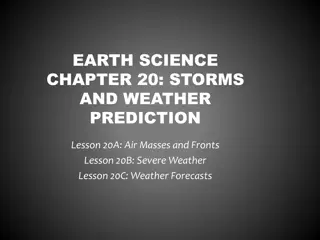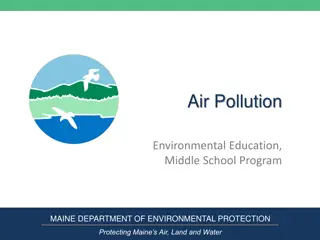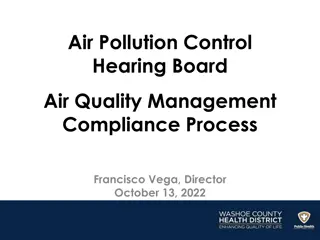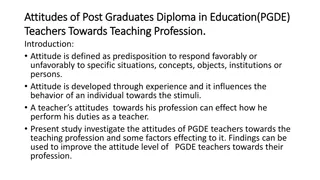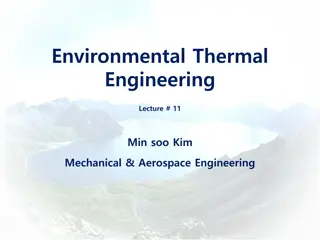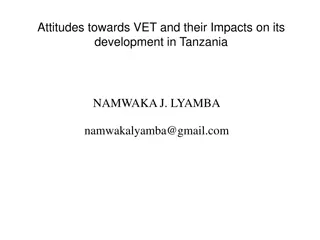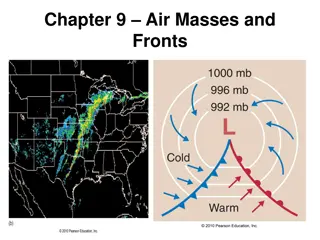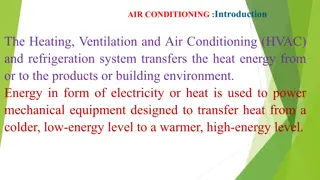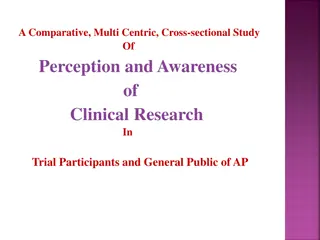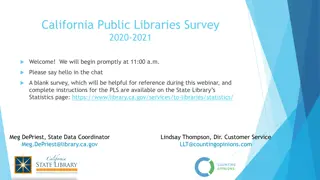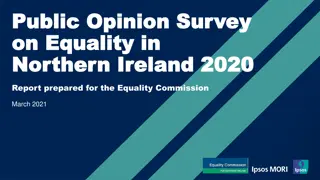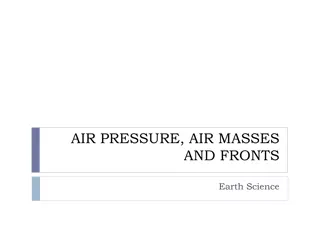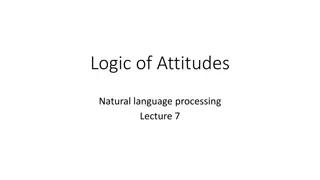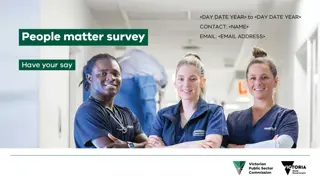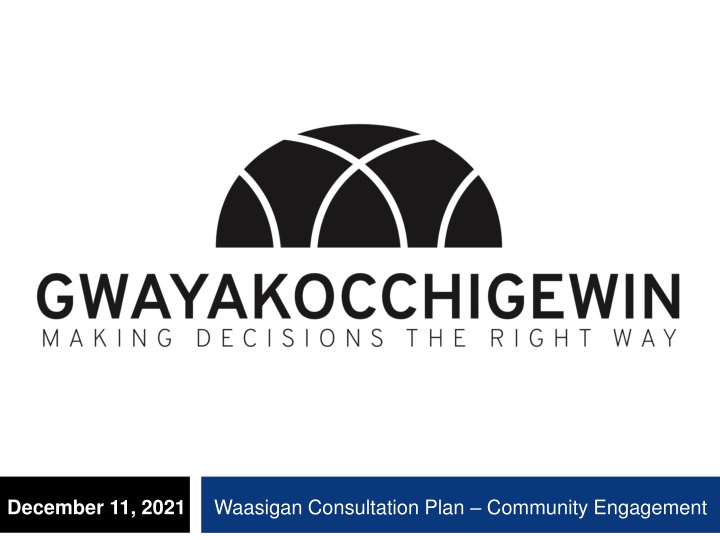
Public Awareness and Attitudes Survey - NZ On Air 2018
Majority of New Zealanders value the diversity of content provided by NZ On Air. Awareness has increased, with 92% of the population being aware of NZ On Air in 2018. The importance of publicly funded television content is emphasized, reflecting consistent attitudes over the years. This survey conducted in 2018 highlights perceptions and awareness levels towards NZ On Air among the New Zealand adult population.
Download Presentation

Please find below an Image/Link to download the presentation.
The content on the website is provided AS IS for your information and personal use only. It may not be sold, licensed, or shared on other websites without obtaining consent from the author. If you encounter any issues during the download, it is possible that the publisher has removed the file from their server.
You are allowed to download the files provided on this website for personal or commercial use, subject to the condition that they are used lawfully. All files are the property of their respective owners.
The content on the website is provided AS IS for your information and personal use only. It may not be sold, licensed, or shared on other websites without obtaining consent from the author.
E N D
Presentation Transcript
Waasigan Consultation Plan Community Engagement December 11, 2021
The Waasigan Project 2 Hydro One received a letter from the Independent Electricity System Operator (IESO) on October 24, 2018 requesting Hydro One begin development work for the Northwest Bulk Transmission Line. The IESO assessed the scope and schedule of the Northwest Bulk Transmission Line and confirmed the need anywhere from the mid-2020s to mid-2030s, to support growth and maintain reliable electricity supply in northwestern The phases are as follows: - Phase 1 - a line from Thunder Bay to Atikokan; - Phase 2 - a line from Atikokan to Dryden; and - Phase 3 - a line from Dryden to the Manitoba border. A Project area map is contained in Appendix A. The consultation plan is a requirement of the Memorandum of Understanding between Ontario and Hydro One and provides the overarching plan for all Indigenous consultation, including the EA and all required permitting.
About Gwayakocchigewin (GLP) 4 GLP is comprised of 8 communities; - Lac Seul First Nation, - Nigigoonsiminikaaning First Nation, - Wabigoon Lake Ojibway Nation, - Migisi Sahgaigan (Eagle Lake First Nation), - Fort William First Nation, - Lac La Croix First Nation, - Saugeen First Nation, - Seine River First Nation These communities have come together to protect their rights and interests of their Communities and their members in relation to the development of the Waasigan Transmission Line Project (the Project) within their traditional territory.
Hydro Ones (HONI)Response 5 Responses - October 31, 2021 HONI - November 8 GLP - November 15 HONI Final Response
Waasigan Project Schedule 6 Activity Timeline Notice of Commencement of Terms of Reference April 24, 2019 Consultation, data collection, and development of corridor alternatives Spring 2019 Spring 2020 Draft Terms of Reference for review June 2020 Proposed Terms of Reference Submitted to the Ministry of the Environment, Conservation and Parks October 2020 Terms of Reference Approved by Ministry of the Environment, Conservation and Parks 2021 Notice of Commencement of Environmental Assessment 2021 Consultation and data collection on Environmental Assessment study areas 2021 - 2022 Draft Environmental Assessment review 2022 Leave to Construct (Section 92) application submission 2022 Decision on Environmental Assessment by Ministry of the Environment, Conservation and Parks 2023/2024 Leave to Construct (Section 92) application approval 2023/2024 Complete development work By end of 2024
The Waasigan Consultation Plan 7 The Waasigan Consultation Plan was set out into the following components; - The Introduction - A Project Overview - The Duty to Consult with Indigenous Peoples - The Consultation Process - Consultation Principles - Consultation Objectives - Consultation Methodology - Consultation Activities - Consultation Timelines - The Record of Consultation GLP Legal and Advisors provided written comments to the Ministry of Energy on the deficiencies in the Waasigan Consultation Plant
Issue 1- Indigenous Participation in Plan Development 8 HONI Consultation Plan (the Plan) was not developed in consultation with Indigenous communities and therefore is not mutually agreed on. Eight Indigenous communities have made efforts to establish and work within the GLP partnership to provide HONI with a single-window for communication that can be all-inclusive. Yet, the development of the Plan was completed without the input of Indigenous Communities and GLP. This action shows a lack of meaningful consultation, respect and partnership from HONI.
Issue 5 Incorporating Indigenous Knowledge, Traditional Land Use 9 The amended Terms of Reference (TOR) still lacks the fair integration of Indigenous Knowledge (IK), Traditional Knowledge (TK), and Traditional Lands Use (TLU) as core components in the EA. IK/TK/TLU should be stipulated as baseline information to inform EA activities and decision making. IK/TK/TLU must be collected and used at the beginning of the EA. Currently, it is perceived that IK/TK/TLU will be supplementary information and simple "plugged in" when received.
Issue 1 - GLP and Indigenous Community Participation - Resolved 10 This issue was resolved on October 6th 2021 when the Ministry of Energy and Ministry of Environment, Conservation and Parks granted a 2.5 month in the project to review the Consultation Plan and discuss potential amendments with Hydro One
Issue 2 - Impacts of the Pandemic - Unresolved 11 GLP Position: There needs to be a distinction will be made between Information sharing and community consultation There should be an acknowledgement that under certain circumstances, face to face engagement may be required and COVID restrictions may impact or delay the ability to carry out these meetings (e.g. elder interviews) - HONI Response: Many of the Indigenous communities participating in the Project have developed protocols and restrictions to reduce and/or prevent the transmission of COVID-19. It is with the utmost support and respect that Hydro One will comply with all community COVID-19 protocols and restrictions to help protect the safety and well-being of the Indigenous communities throughout the study area. Hydro One will seek to use methods that are consistent with those that local Indigenous leaders, Councils, staff and their advisors are currently using for meetings, conferences, forums and that their advisors are using for engagement during pandemic circumstances . -
Issue 3 Types of Accommodation - Unresolved 12 GLP Position: The Duty must always be carried out with the intent to accommodate substantially address the First Nations concerns. So said the SCC in 1997 and so it says today. Today, it is recognized that accommodation measures include not just two types (1) prevent impacts that can be fully prevented, and (2) mitigate other impacts. They also include two other types (2a) compensate or offset with benefits those impacts that remain (bringing the impacts/benefits equation to zero), and (2b) provide net positive returns (not just zero) reflecting the treaty promise of sharing the lands and resources and their benefits rather than having all net benefits accrue to others. The CP should state that all four types of accommodation measures will be on the table and provided for. - HONI Response: Hydro One appreciates the response and will work with Indigenous communities to identify accommodation measures, where appropriate, that are mutually acceptable and can be proposed to the Crown. Hydro One will also bring to the Crown's attention any other accommodation requests and proposals raised by Indigenous communities through consultation. -
Issue 4 - Dispute Resolution Process - Unresolved 13 GLP Position: Suggested language for the CP: The Initial Engagement Agreement (IEA) between Hydro One and GLP and the First Nations comprising GLP, contains dispute resolution requirements which Hydro One shall abide in respect of all matters comprising a Dispute as that term is defined in the IEA, acknowledging that a purpose of the IEA is to facilitate engagement on the Project including as set out in this Consultation Plan. HONI Response: To the extent that Hydro One is bound by the IEA, it will comply with those requirements. Within the consultation framework, the proper "arbitrator", in respect of the Project and Indigenous interests, is the Crown, which seeks to understand the concerns of Indigenous communities, available accommodation, and the broader public interest. Hydro One believes that the language in the CP is appropriate and reflects this commitment. - - The issue relates to the IEA applies only to GLP and not to all Indigenous Communities. This will not resolve any 3 party disputes or set out a clearly defined process with roles, responsibilities, timelines, follow up.
Issue 5 Incorporating Indigenous Knowledge, Traditional Land Use - Unresolved 14 GLP Position: HONI will provide input before critical decision-making points during the EA process, so that Indigenous communities have input on how the undertaking and its alternatives may have an impact on their rights and IK. Hydro One will ensure that Indigenous communities are consulted and satisfied that IK is considered and incorporated into EA and other permit decision-making milestone including, but not limited to, the following: The development of community-specific Indigenous engagement and communication plans The development of the methodology of and documentation of results from EA baseline data collection, including the natural heritage field studies and the Stage 1 Archaeological Assessment; The development of the approach to the evaluation of alternatives, Results of the comparative evaluation of alternatives and identification of a preferred route; Preliminary design of the preferred route and supporting infrastructure, such as access roads, construction camps and lay- down areas; and The effects assessment of the preferred route and other project components, including the development of design refinements, mitigation measures and monitoring to address any potential effects and conclusions of the assessment. - - In no instance will Hydro One proceed with any decision or decision-making point in the EA without ensuring that a meaningful opportunity was provided to Indigenous communities to supply IK prior to a decision-making point and that IK provided was applied to and affected such prior decision. -
Issue 5 Incorporating Indigenous Knowledge, Traditional Land Use Continued - Unresolved 15 HONI Response: It is appropriate that the values and knowledge be incorporated as an on-going process throughout the project from planning to execution and reclamation, and the ITK isn t a single report but a process integral to the planning and execution and reclamation that guides the project at all stages. Its integration into the project is iterative and valuable in shaping how the project is managed. Section 5 of the MOU CP will be revised to include the following: Effective and meaningful communication/engagement requires continuing to build and establish working relationships between the Project team and Indigenous communities. Hydro One will ensure that Indigenous communities are consulted and have the opportunity to share IK to be considered and incorporated into each EA decision-making milestone including, but not limited to, the following: The development of community-specific Indigenous engagement and communication plans The development of the methodology of and documentation of results from EA baseline data collection, including the natural heritage field studies and the Stage 1 Archaeological Assessment; The development of the approach to the evaluation of alternatives Results of the comparative evaluation of alternatives and identification of a preferred route; Preliminary design of the preferred route and supporting infrastructure The effects assessment of the preferred route and other project components, including the development of design refinements, mitigation measures and monitoring to address any potential effects and conclusions of the assessment. - -
GLP Member Comments 16 Comments will be collected on the 5 issues from - The GLP Board - The GLP Protection Committee - GLP Partner Communities and their members Further Comments can be submitted to - Cathy Banning - Maawandoon cathy.banning@Maawandoon.ca - Marvin Pelletier Maawandoon marvin.pelletier@Maawandoon.ca - Darren Harper - Maawandoon darren.harper@Maawandoon.ca

